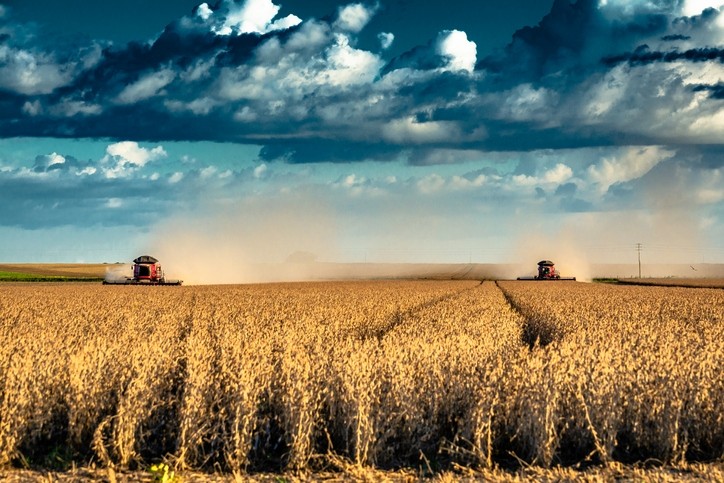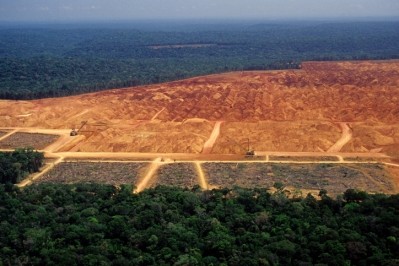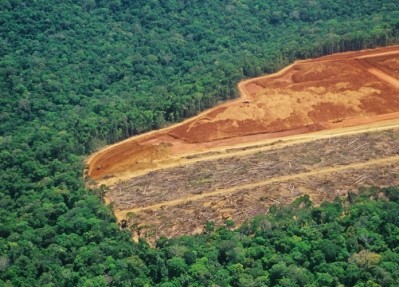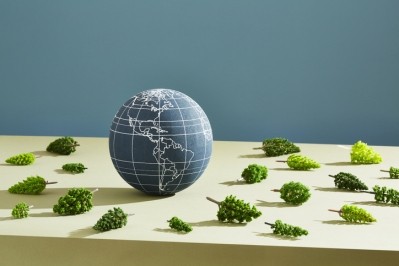Study: Deforestation linked heat, dryness causing billions of losses in soy revenue in Brazil

According to new peer-reviewed research, published in the journal World Development, extreme heat—which adjacent tropical forests help keep in check—has reduced soybean income in Brazil.
The paper, Conserving the Cerrado and Amazon biomes of Brazil protects the soy economy from damaging warming, shows that protecting the Amazon and Cerrado can prevent the sort of high temperatures that damages the productivity of crops.
The researchers said their paper aims to address the balance between the interests to expand the existing Brazilian agricultural sector and to safeguard its sustainability.
“Destroying forests and other ecosystems instantly turns up the heat and reduces precipitation in the immediate vicinity where the destruction takes place, scorching soybean plants and inflicting great harm on the sector’s profitability,” said Rafaela Flach, the study’s lead author.
“The economic fallout is big—and getting bigger, with serious impacts on global and local economics and food security. It’s a local problem with global ramifications, and it’s happening in tropical regions worldwide.”
Soy cultivation in Brazil
Brazil has seen tremendous agricultural growth, fueled in part by its emergence as a major agricultural exporter (Zalles et al., 2019), reported the authors.
Soybean cultivation has expanded dramatically in the country, which is now the world’s largest producer with 37% of global market share. Brazilian farmers have increased crop yields per hectare—from 1.7 to 3.2 tons per hectare between 1990 and 2019—while also expanding the land being planted—from 11.5 to 35.8 million ha between 1990 and 2019.
"This growth occurred especially in new agricultural regions to the north and west of established agricultural poles, in the Amazon and Cerrado biomes, respectively (Dias et al., 2016)."
By 2019, soy constituted 49% of Brazilian cropland area and 41% of agricultural revenues. The study claims that farmers would have increased yields even more if they had not deforested, which would have held extreme heat at bay and maintained rainfall.
Dr Michael Obersteiner, a study co-author and the Director of the Environmental Change Institute at the University of Oxford, commented: “The soy sector has a powerful opportunity to reduce this risk by stopping deforestation. In so doing, they benefit their industry—to say nothing of the major contribution to slowing global climate change.”
New body of research
Scientists, noted the researchers, already have a well-established understanding of how tropical deforestation contributes to global climate change through emitting carbon and reducing the ability of the world’s forests to take more carbon out of the atmosphere.
Now a new body of research is emerging, showing how tropical deforestation has climate impacts beyond carbon: Deforestation immediately increases extreme heat locally and decreases regional and local rainfall, said the authors.
These cascading impacts parch soil and harm crops and livestock, threatening agriculture both nearby and far away—with billion-dollar ramifications, they added.
“While the global impacts should not be underestimated, the damage from ecosystem loss already being done to the Brazilian economy alone is severe,” said Flach.
Native vegetation and heat regulation
In the new research, scientists analyzed the value of native vegetation in providing extreme heat regulation for soy production using two complementary approaches: soy revenue lost from the destruction of forests and other ecosystems and soy revenue gained from the conservation of these ecosystems.
For the analysis focused on ecosystem loss, they estimated the increased exposure to extreme heat for the amount of vegetation that was removed. For the conservation analysis, they modeled the value of standing forests and other ecosystems based on estimated regulation of extreme heat.










